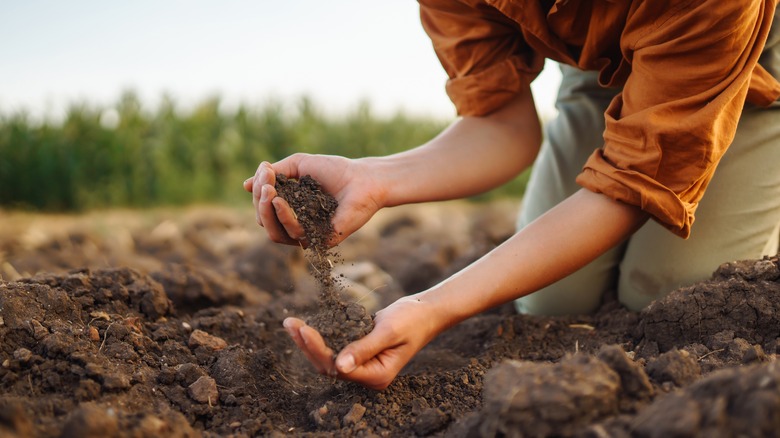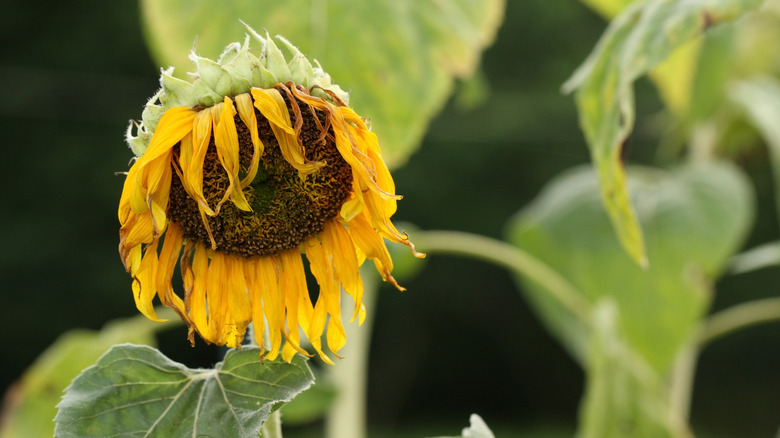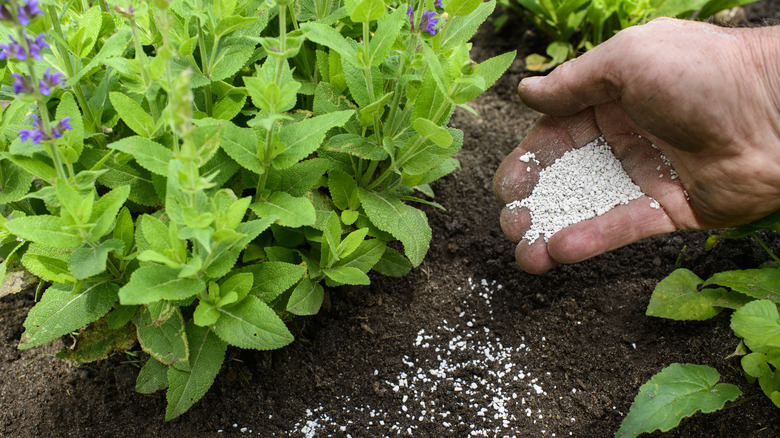How To Tell If Your Garden Soil Is Lacking Nitrogen And What You Can Do About It
Nitrogen is one of the soil nutrients that is most essential for healthy plant growth because it not only helps the plant roots soak up water, but also aids in photosynthesis by forming the ever-important sunlight-absorbing pigment chlorophyll. Because of this, if your garden is low in nitrogen, many of your plants — and especially your fruits and vegetables — will start to struggle and the beauty of your garden plus its harvest will be greatly affected. So, how can you tell if your plants are suffering from a nitrogen-deficiency and, if they are, how do you fix it?
First, let's start with the major signs of a nitrogen deficiency. Typically, because a lack of nitrogen affects the production of chlorophyll, the first noticeable symptom is yellow leaves. However, because there are many possible causes of plant leaves turning yellow, it is important to look at your garden closely and evaluate the manner in which they are yellowing to see if the problem is nitrogen or something else. If your soil is lacking in nitrogen, then the older and bottom-most leaves of your plants will likely turn yellow first while the rest of your plant will be light green. Newer foliage may still appear dark green but may grow smaller than normal.
Other ways to tell your soil is low in nitrogen
Because yellowing leaves and stunted growth are also symptoms of other nutrient deficiencies (like phosphorus and potassium), it is important to make sure that nitrogen is truly your culprit by checking other symptoms. Plants that are suffering from a nitrogen deficiency also often grow more slowly than usual and produce fewer or smaller flowers and fruits. Some yellowing leaves may even turn red or brown in spots and fall from the plant earlier than normal.
However, because many of these symptoms are also similar to those of a soil iron deficiency, oftentimes, the easiest way to diagnose this problem is to do a quick soil test. Basic soil testing kits can be purchased either online or at your local garden center. For a more detailed soil analysis, you can also send a soil sample into a lab and receive a full soil health report. No matter which method you choose, once you know for sure that your soil is lacking in nitrogen you can start taking steps to amend it.
How to solve a nitrogen deficiency in the garden
The easiest and quickest way to solve a nitrogen deficiency in your garden is to add a nitrogen-based fertilizer. Nitrogen fertilizers are usually found in organic or inorganic versions, and which one you choose will depend on how quickly you want the nitrogen to be bioavailable. Inorganic fertilizers are typically chemical-based and break down more quickly in the soil — so, if time is an issue, then inorganic is your friend. Inorganic fertilizers are also often cheaper.
Organic fertilizers are made from natural compounds and therefore take longer to break down and start working. You can purchase organic fertilizers at the store or make them yourself using compost, coffee grounds, blood meal, grass clippings, or manure. However, no matter which method you choose, make sure you follow the instructions on the package and don't add too much because a surplus of nitrogen in the soil can cause a whole host of other problems.
Once you've amended the nitrogen levels of your soil, you can also take steps to make sure your garden doesn't have a nitrogen deficiency in the future. You can do this by adding mulch (or other organic plant matter) to your garden regularly or by planting and rotating nitrogen-fixing plants like beans, peas, and clover.


